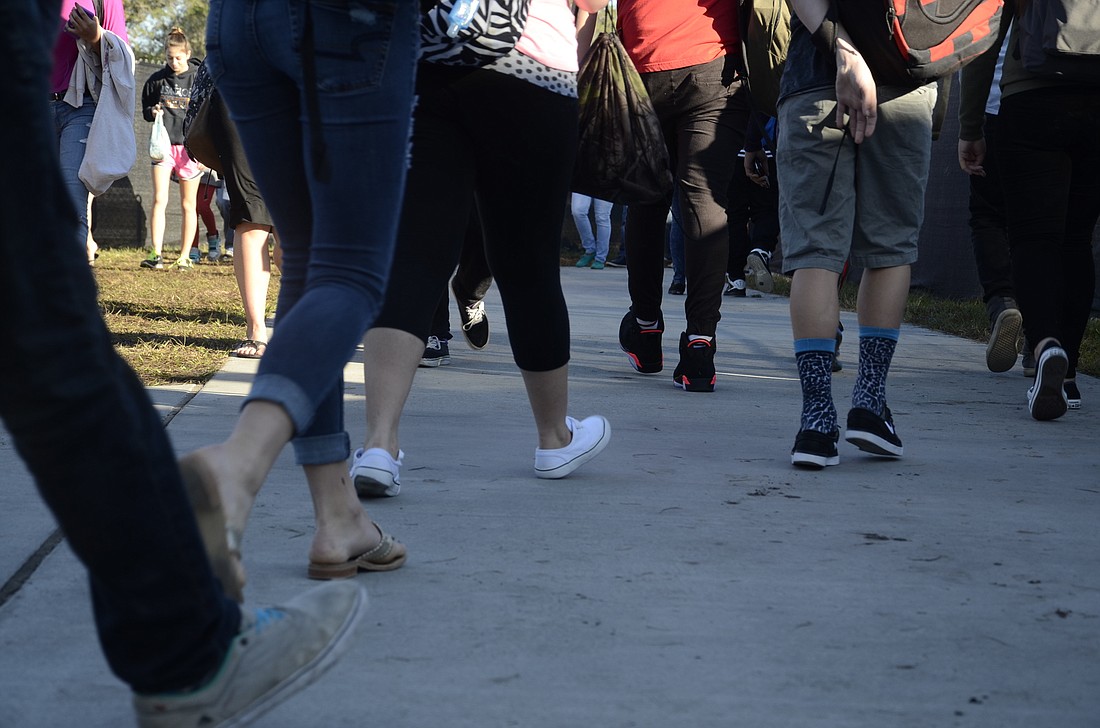- April 28, 2024
-
-
Loading

Loading

As more of the teaching workforce in Sarasota County reaches retirement age, the district is facing more than 100 vacancies when the school year comes to a close in June.
Al Weidner, the deputy chief financial officer for the school district, said there were already 82 vacancies in the last year. The district hired substitutes to cover the vacancies, but it wants to focus on hiring replacements.
Lori White, superintendent, urged the board at Tuesday’s workshop to consider pushing forward with the budget process and producing a preliminary budget by April so that the district could work on staffing in May.
“It’s critical we get ahead of this,” White said. “Other schools are seeing a blip up in vacancies. It’s going to be competitive to get quality staff.”
The district has already made some plans, White said, including recruiting trips and recruitment for critical needs teachers.
White suggested the board consider a status quo budget, which would essentially assume the same budget as last year, with additional funds added for increases in students and staff.
Weidner said the millage rate of 7.777 is predicted to increase by 0.016 to 7.793 under the governor’s estimated millage rate, but that number could change based on the tax roll, which is growing with increasing property values. One mill equals $1 for every $1,000 of assessed property value. That means for every $100,000 of assessed value, homeowners could see a $1.60 increase on their property-tax bill. The proposed millage rate will be released in July.
Some of the upcoming vacancies haven’t been posted yet — a strategic move according to White. Quality educators look for jobs during specific periods of the year, usually toward the end of the school year. The best candidates already have jobs, and posting jobs now would most likely draw less than top-notch candidates.
“There’s a window of time, and now is not it,” she said.
Both the number of teacher vacancies and the number of students entering the county school system is increasing. Weidner said the district was predicting an additional 938 students in the 2015-2016 school year, including enrollment in charter schools. The current enrollment is 42,360.
The additional student numbers come with more predictions: Salaries will have to be raised 1.25% based on negotiations with the teachers’ union, Florida Education Association; the district will pay 10% more for medical insurance; and funding from two federal grants will be eliminated or reduced.
The increase in medical insurance is based on the current rates. However, the school board discussed at Tuesday’s workshop the possibility of becoming self-insured.
Weidner said these predictions would lead to the percentage of unassigned funds in the general fund balance decreasing to 7.48%, or $31.5 million, of the necessary appropriations for the 2015-2016 budget.
The school board’s minimum percentage of appropriations for the general fund is 7.5%, meaning that the current estimate would be below the minimum requirement for the first time since 2002, when it fell to 6.35%. The downward trend began in 2010.
The decrease for the last few years has been because state revenues are still at the 2007-2008 level, Weidner said. The solution will most likely wait until the state Legislature makes a determination on education funding in May. If the state does not approve a lower unassigned fund balance, the district could have to freeze hiring to bring the numbers back up, he said.
After the meeting, however, Weidner said he saw the budget predictions in a favorable light.
“It’s nice to not be cutting,” he said. “This budget is a pleasure.”
Since 2007, the district has cut $102 million from its budget, including eliminating staff, because of the recession.